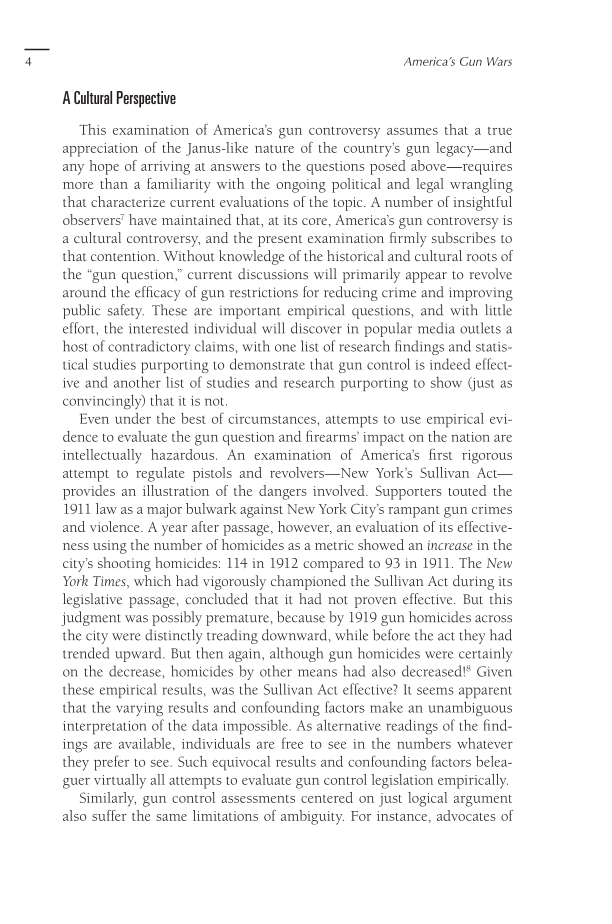4 America’s Gun Wars A Cultural Perspective This examination of America’s gun controversy assumes that a true appreciation of the Janus-like nature of the country’s gun legacy—and any hope of arriving at answers to the questions posed above—requires more than a familiarity with the ongoing political and legal wrangling that characterize current evaluations of the topic. A number of insightful observers7 have maintained that, at its core, America’s gun controversy is a cultural controversy, and the present examination firmly subscribes to that contention. Without knowledge of the historical and cultural roots of the “gun question,” current discussions will primarily appear to revolve around the efficacy of gun restrictions for reducing crime and improving public safety. These are important empirical questions, and with little effort, the interested individual will discover in popular media outlets a host of contradictory claims, with one list of research findings and statis- tical studies purporting to demonstrate that gun control is indeed effect- ive and another list of studies and research purporting to show (just as convincingly) that it is not. Even under the best of circumstances, attempts to use empirical evi- dence to evaluate the gun question and firearms’ impact on the nation are intellectually hazardous. An examination of America’s first rigorous attempt to regulate pistols and revolvers—New York’s Sullivan Act— provides an illustration of the dangers involved. Supporters touted the 1911 law as a major bulwark against New York City’s rampant gun crimes and violence. A year after passage, however, an evaluation of its effective- ness using the number of homicides as a metric showed an increase in the city’s shooting homicides: 114 in 1912 compared to 93 in 1911. The New York Times, which had vigorously championed the Sullivan Act during its legislative passage, concluded that it had not proven effective. But this judgment was possibly premature, because by 1919 gun homicides across the city were distinctly treading downward, while before the act they had trended upward. But then again, although gun homicides were certainly on the decrease, homicides by other means had also decreased!8 Given these empirical results, was the Sullivan Act effective? It seems apparent that the varying results and confounding factors make an unambiguous interpretation of the data impossible. As alternative readings of the find- ings are available, individuals are free to see in the numbers whatever they prefer to see. Such equivocal results and confounding factors belea- guer virtually all attempts to evaluate gun control legislation empirically. Similarly, gun control assessments centered on just logical argument also suffer the same limitations of ambiguity. For instance, advocates of
Document Details My Account Print multiple pages
Print
You have printed 0 times in the last 24 hours.
Your print count will reset on at .
You may print 0 more time(s) before then.
You may print a maximum of 0 pages at a time.














































































































































































































